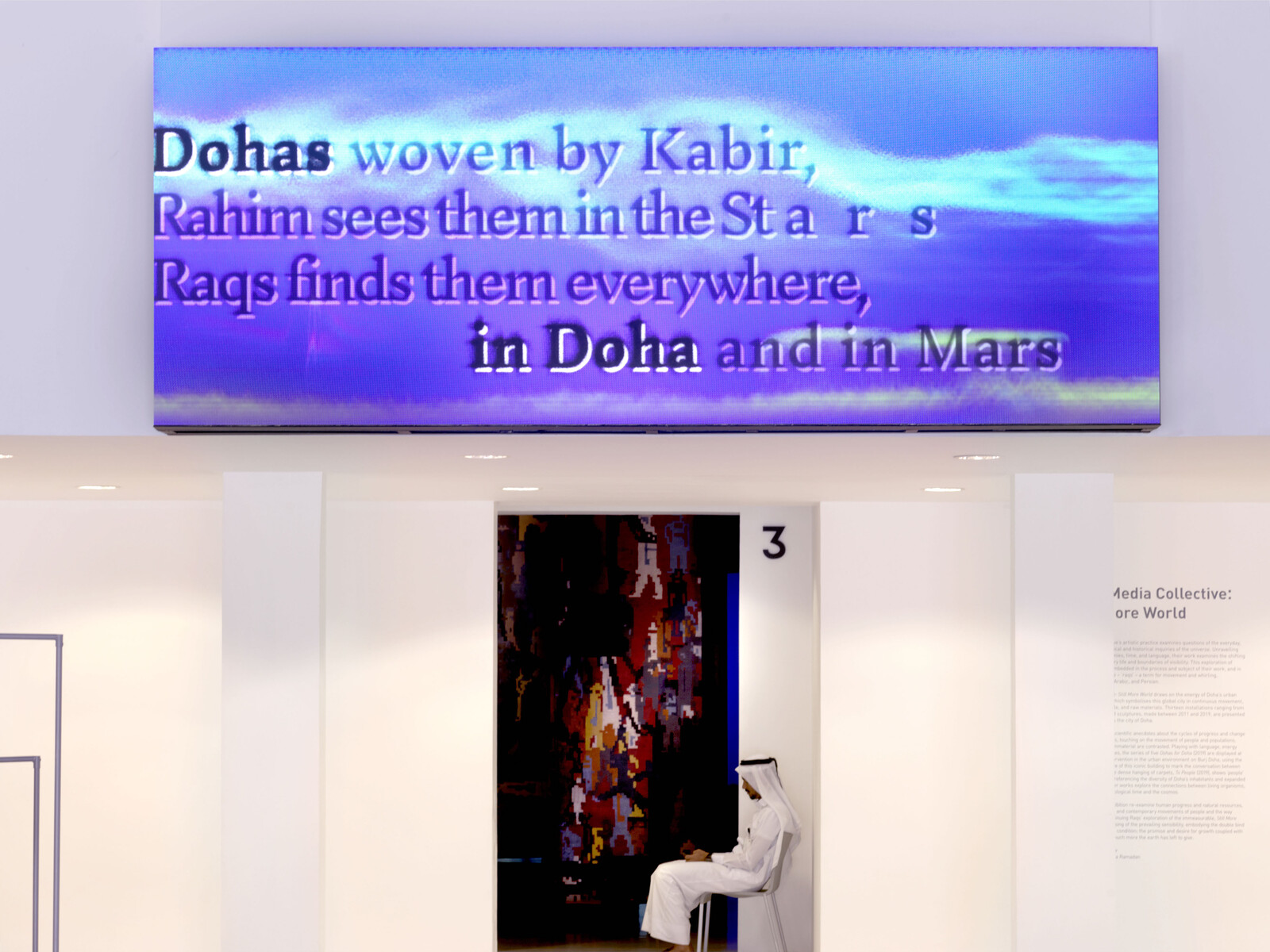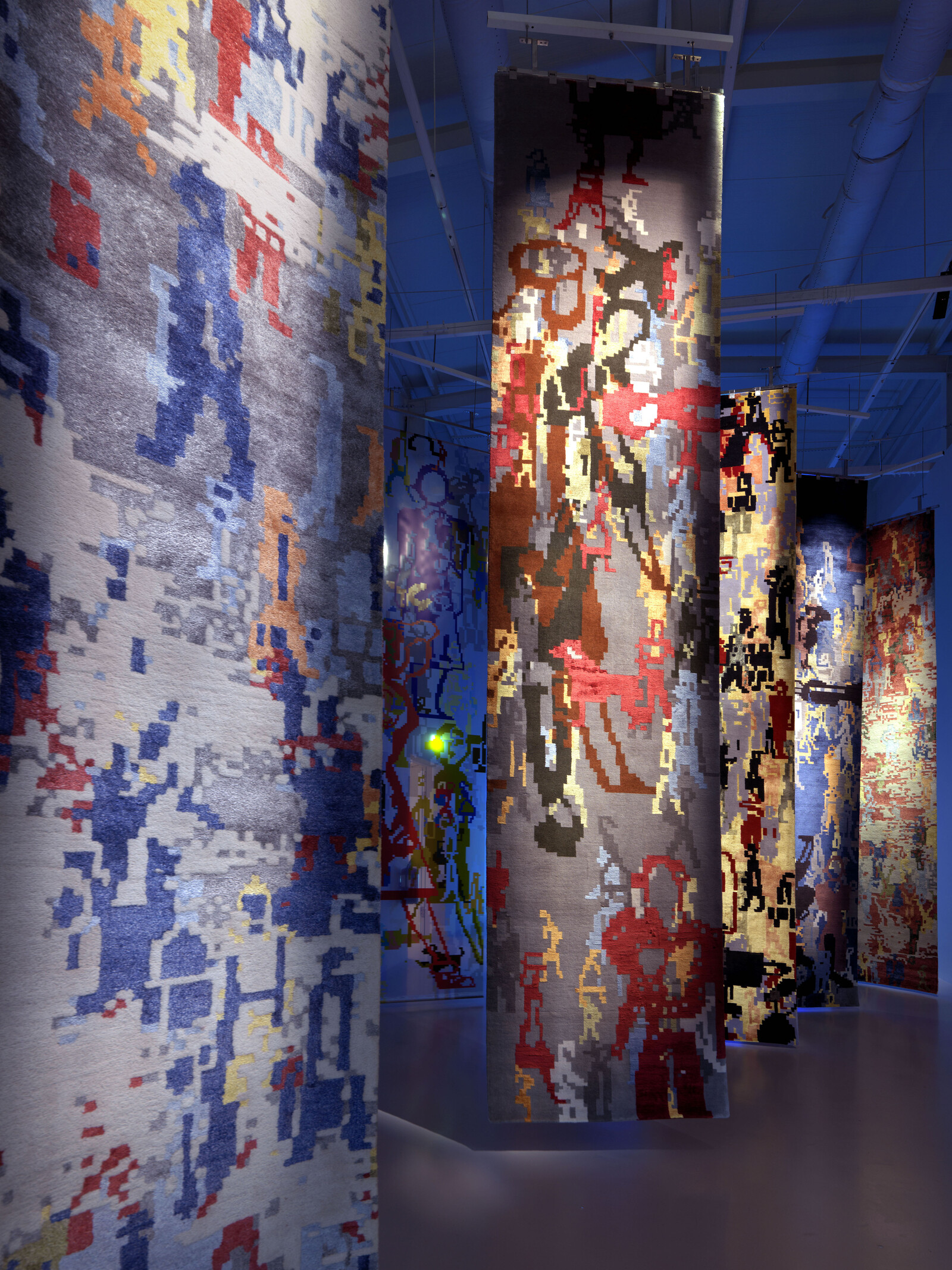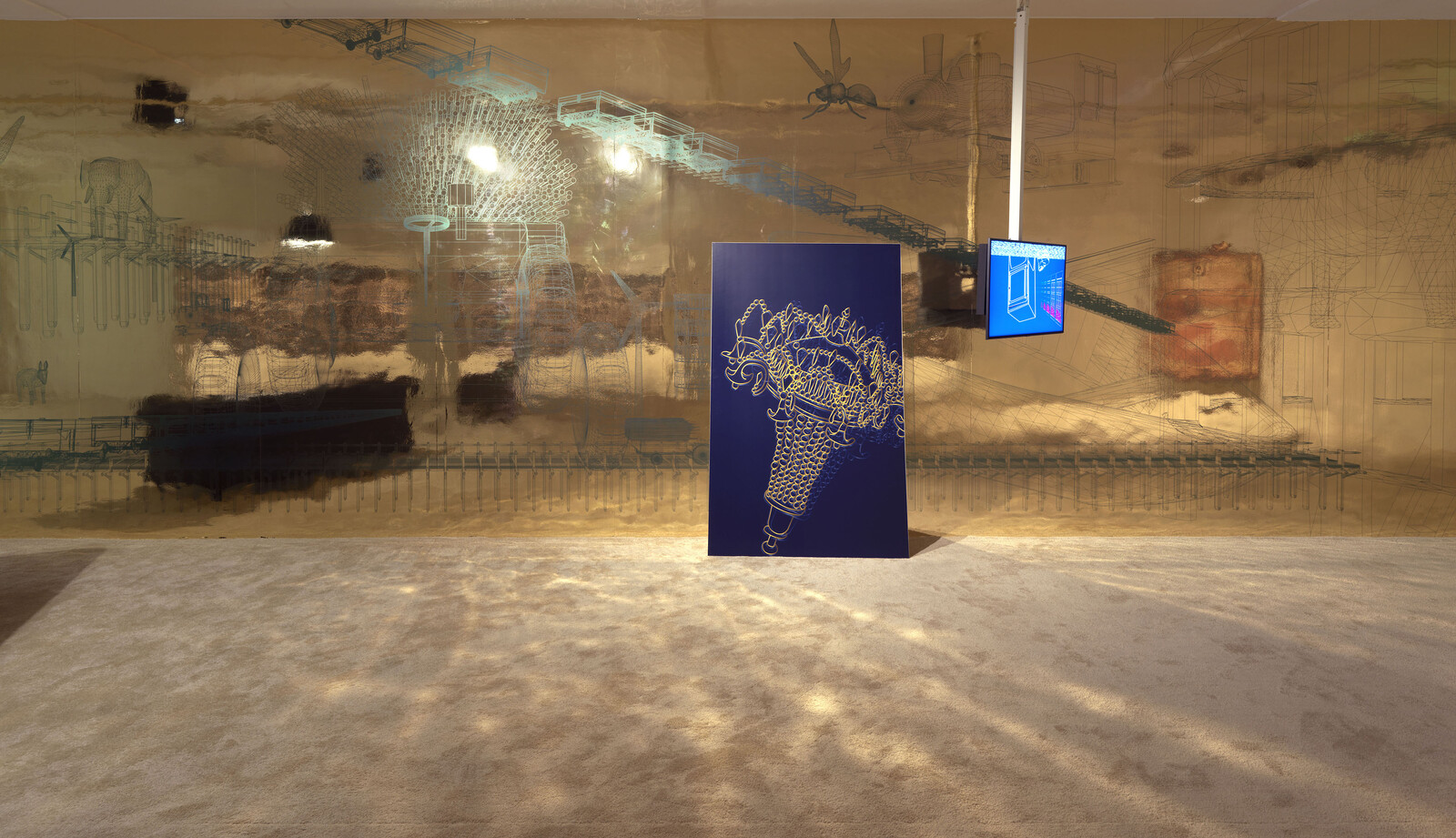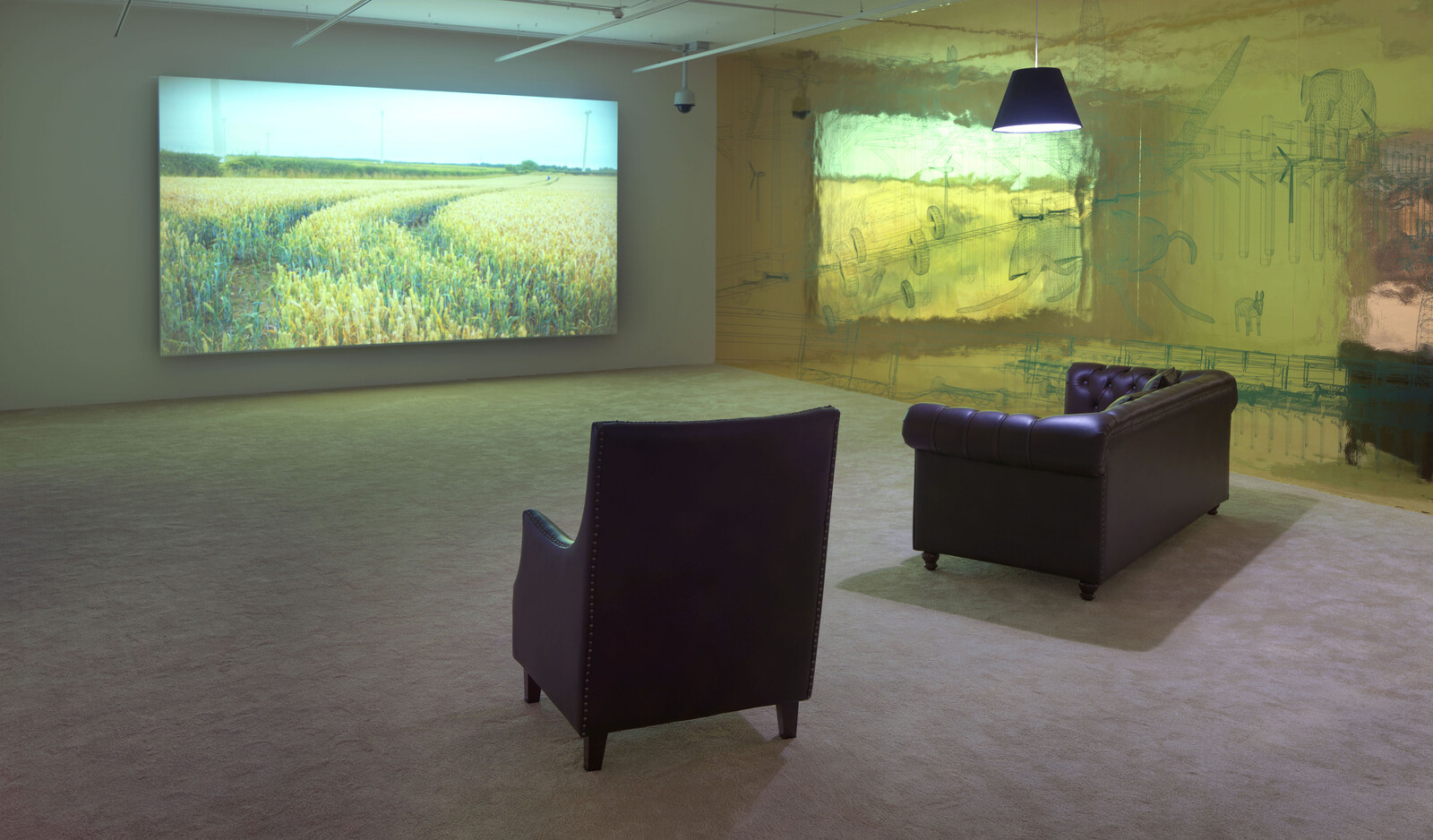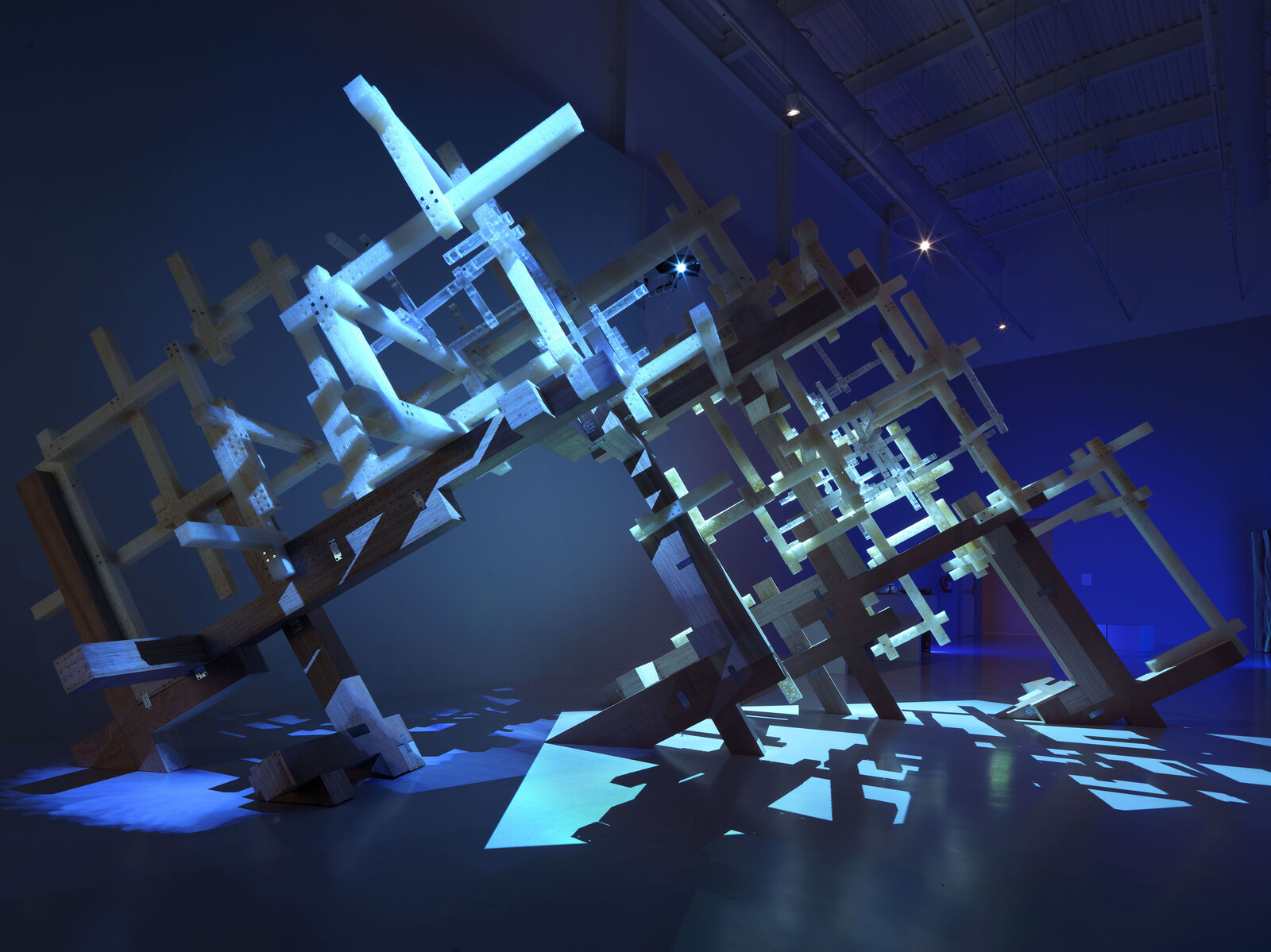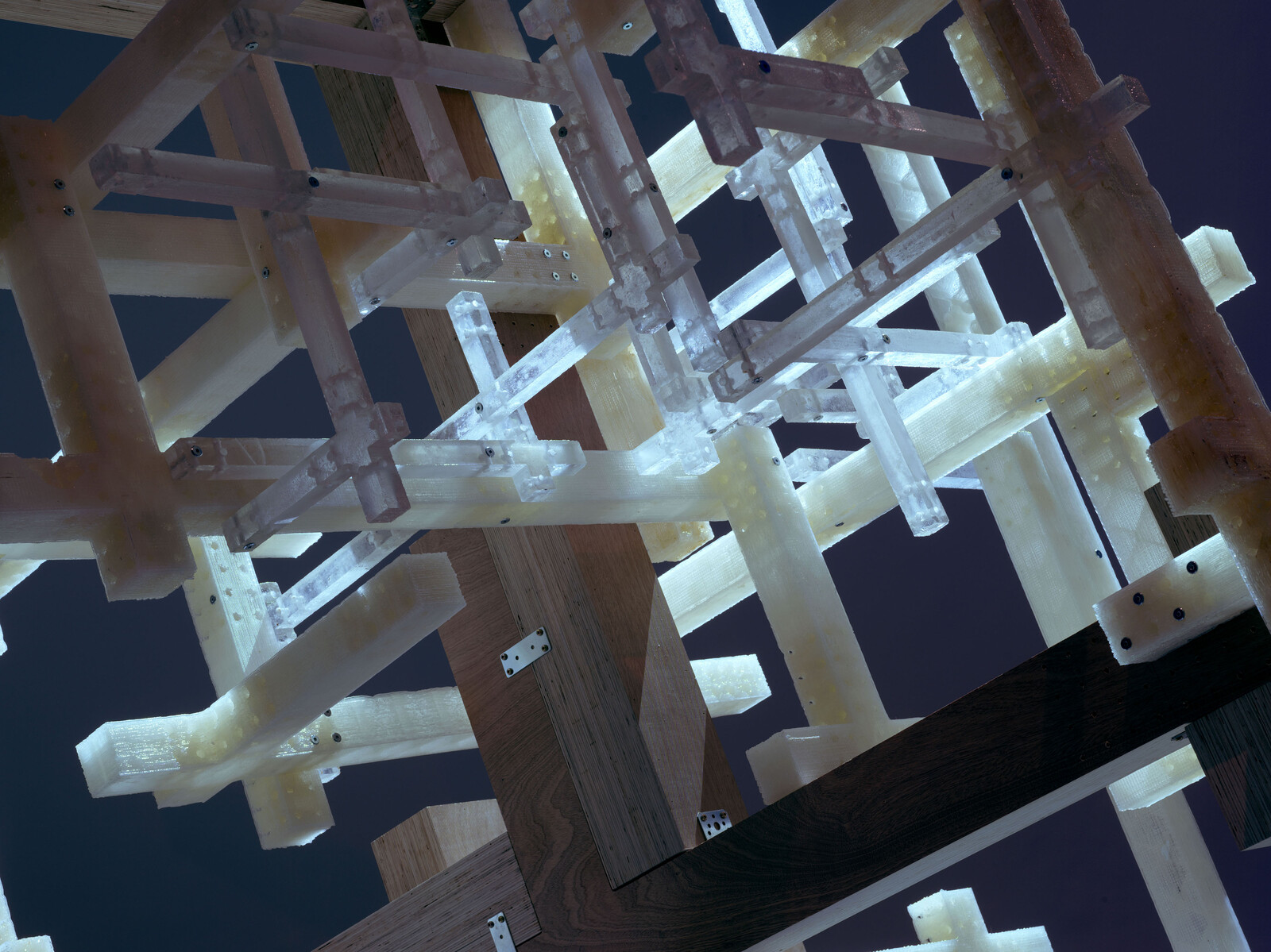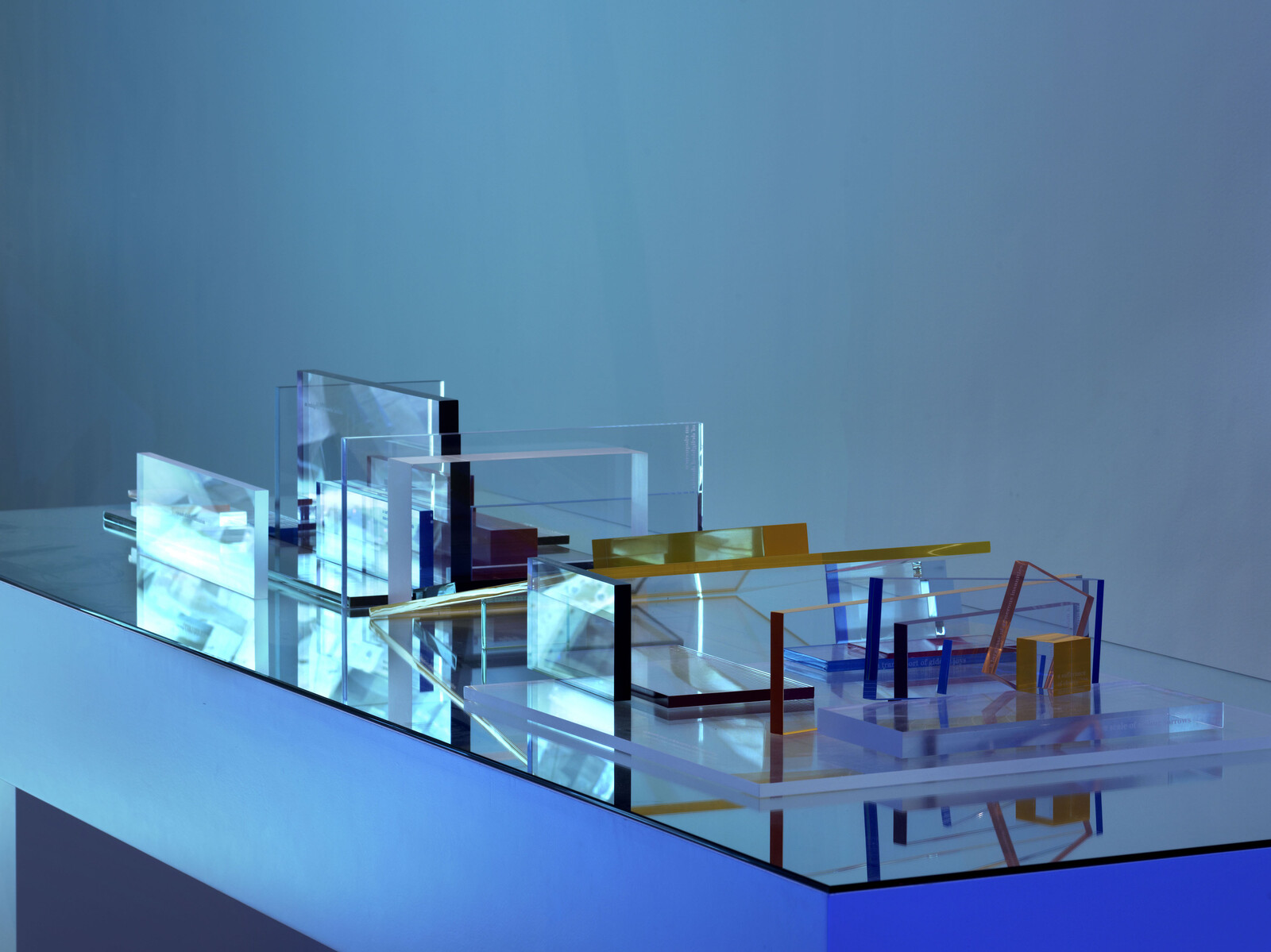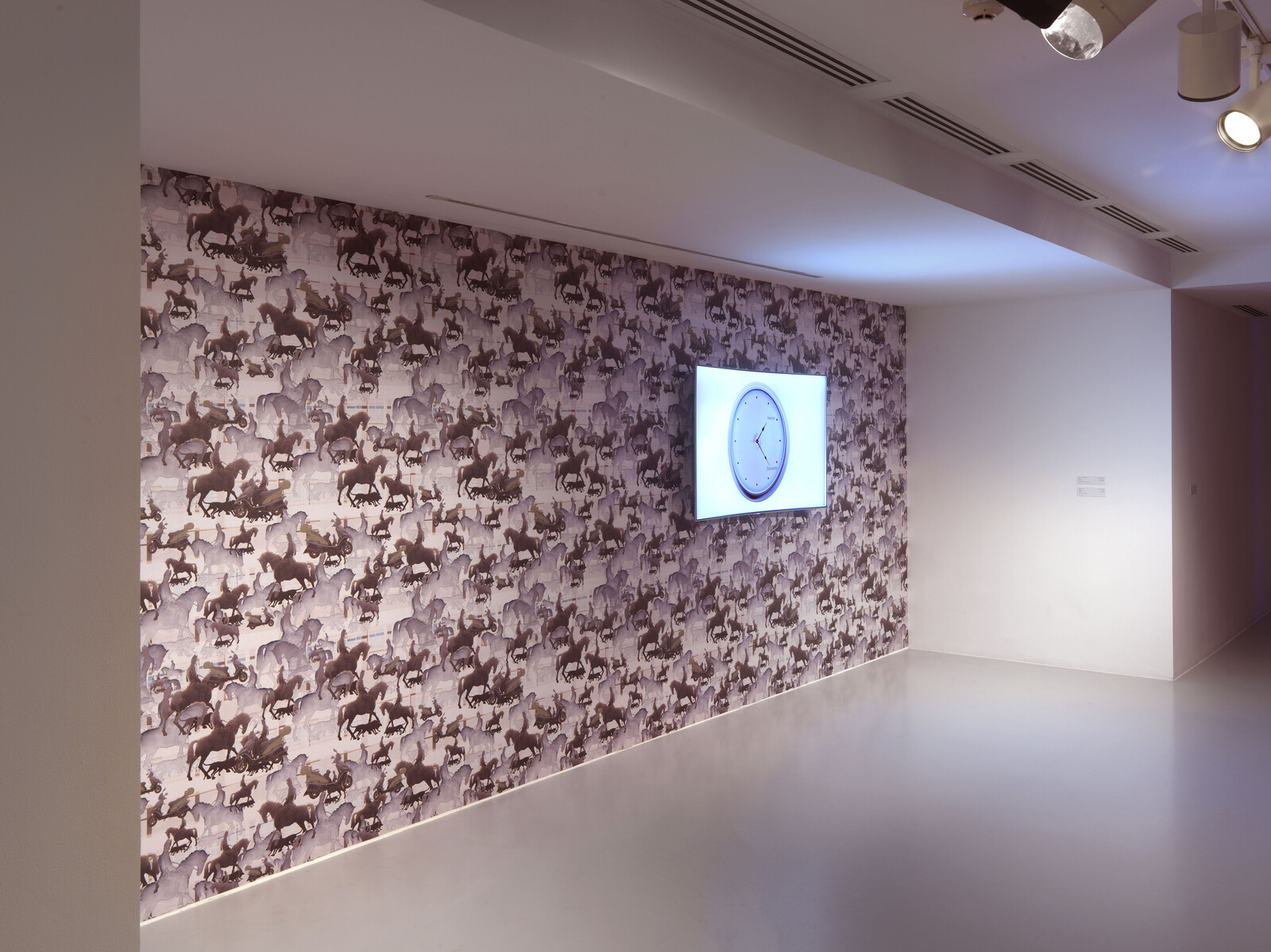In recent years, the route from India to Qatar has been heavily and not uncontroversially travelled by hundreds of thousands of migrant workers. Almost a quarter of Qatar’s estimated 2.6 million population is Indian; there are more newspapers printed in Malayalam (the principal language of the South Indian state of Kerala) than in Arabic or English; and in 2019, India is Qatar’s partner nation in a year of cultural exchange. Although in some ways that last might be the icing on a cake that is already baked.
It’s fitting then that Raqs Media Collective’s contribution to this cultural union opens with a new work (one of two in this 16-work, eight-year survey) that is simultaneously site specific and imported. Located in Mathaf’s atrium, Dohas for Doha (2019) introduces some of Raqs’s favorite themes: translation, migration, doubling, and miscegenation. It comprises five dohas—aphorisms in the form of rhyming couplets, a type of Hindi poetry most famously deployed by the fifteenth-century Indian mystic Kabir (who occupies a double position as both a Muslim and a Hindu saint). Each flashes up on an LED screen in English and Arabic and is ostensibly a comment about Raqs’s process of creation—“This doha talks in shadow speech / Where words fail Raqs let commas reach”—though not necessarily one that is as illuminating as the screen on which it appears. The Hindi word “doha” has seemingly little to do with its Arabic twin: the name of Qatar’s capital is said to have originated from the word dohat, meaning roundness, a reference to the geography of Doha Bay. But perhaps any cultural exchange begins with a desire to find the familiar within the alien, however tenuous the connection. Hovering between ideas and objects, the Dohas for Doha occupy a space closer to the marketing slogans that adorn illuminated cities. In case you missed that connection, a second set of them blinks on and off on the façade of Qatar’s iconic 46-story Burj Doha as part of its nightly light show.
Back inside Mathaf’s gallery spaces, The Untold Intimacy of Digits (2011) features the handprint of a Bengal peasant, Raj Konai, which was sent in 1858 to Francis Galton, a British pioneer of eugenics. Digitized and animated by Raqs, his hand seems to gesture at you as a signature of atomized individuality and of mass societal policing with all the ambivalence of, say, Stevie Smith’s 1957 poem “Not Waving but Drowning”: you’re never quite sure if Raqs’s hand is raised in welcome or as a warning. But such comparisons only demonstrate how Raqs is working on you, encouraging you to weave a network of associations to match those they have put on show. Another of Raqs’s dohas, for example, brings up seventeenth-century Delhi poet Rahim, known for his poetry along with books on astrology: “Dohas woven by Kabir, Rahim sees them in the Stars / Raqs finds them everywhere, in Doha and in Mars.” The suggestion is that you should too.
The second new work, To People (2019), comprises 11 textile banners (carpets and tapestries) and two similarly proportioned prints suspended from the ceiling so that they dangle like a claustrophobic cluster of columns or trees. Each contains a colored, abstracted image of a crowd. If the title of the work oscillates between a dedication and an action, then the obviously handwoven form of the fabrics is alien to the digitally manipulated crowd motifs. There’s another nod here to Kabir, for whom weaving was a metaphor for the work of God, the biology of humans, and the writing of verse. The two digital prints show no trace of handiwork at all; godlessness and alienation are the price of progress.
The abstracted crowd is present too in Seven Billion and One (2015), a series of prints featuring repeated, swirling infinity lemniscates, titled after the earth’s human population at the time and looking like a teacher’s chalk on a blackboard. The work functions as something of a signature for Raqs, a term for movement or whirling in Urdu and Arabic, and introduces the very present problem of potentially infinite population growth constrained within a finite space. Where Kabir obsessively turned to the infinity of the divine to square such circles, Raqs turns to George Orwell. Provisions for Everybody (2018) is a video that traces a journey between the British author’s birthplace in India to the northern slums of his homeland and from the cultural and geological past to the present. Raqs’s earlier dohas are here matched by aphoristic quotations from The Road to Wigan Pier (1937), in which Orwell documents the bleak living conditions of workers in Yorkshire and Lancashire and his struggle to get Britain’s middle classes to acknowledge them. “The world is a raft sailing through space with, potentially, plenty of provisions for everybody,” runs one.
The exhibition ends with the installation Alive, with Cerussite and Peppered Moth (2017), a crystalline structure of plywood, resin, and 3D-printed plastic beams, implying infinite and increasingly rapid growth, onto which are projected shadowy images of the peppered moth. Once prevalent in another part of Britain’s industrial north, Manchester (where the work was originally commissioned, and for whose newspaper, the Manchester Evening News, Orwell wrote), the peppered moth is increasingly rare as pollution on the city’s buildings made the insect’s white spots a target for rather than a camouflage against predators. Cerussite, recognizable for its white color and twinned crystal structure, is the ore from which lead paint was derived. “Toxic stuff, and poor old George,” you might think as the latter’s predictions about “plenty for everybody” now seem delusional. But the reduction of the work to geometry, like the earlier repetitive swirls of chalk on board, suggests a problem to be solved rather than a tragedy to be observed. If Raqs is to be believed, attempting to measure the unmeasurable and express the inexpressible might be a start.

